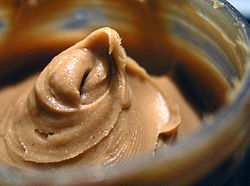This article needs additional citations for verification .(February 2017) |
It has been suggested that this article be split into articles titled Soft diet and Pureed diet . (Discuss) (September 2022) |
A mechanical soft diet or edentulous diet, or soft food(s) diet, is a diet that involves only foods that are physically soft, with the goal of reducing or eliminating the need to chew the food. This is also commonly referred to as a texture-modified diet within the speech-language pathology field and can have varying degrees of severity ranging from mushy solids to thicker liquids to a pure liquid diet. The IDDSI (International Dysphagia Diet Standardization Initiative) has developed a standardized framework for labeling the modified foods and liquids. [1] It is recommended for people who have difficulty chewing food, including people with some types of dysphagia (difficulty swallowing), the loss of many or all teeth, pain from recently adjusted dental braces, or surgery involving the jaw, mouth, or gastrointestinal tract.
Contents
- Alternatives
- Examples
- Desserts
- Fruits and vegetables
- Grains/starches
- Protein
- See also
- References
- External links
A mechanical soft diet can include many or most foods if they are mashed, puréed, chopped very small, combined with sauce or gravy, or softened in liquid.
In some situations, there are additional restrictions. For example, patients who need to avoid acid reflux, such as those recovering from esophageal surgery for achalasia, are also instructed to stay away from foods that can aggravate reflux, which include alcohol, caffeine, chocolate, citrus fruits, ketchup and other tomato products, mint, and spicy foods. Foods such as blackberries and tomatoes may be restricted because they contain small seeds. [2]



